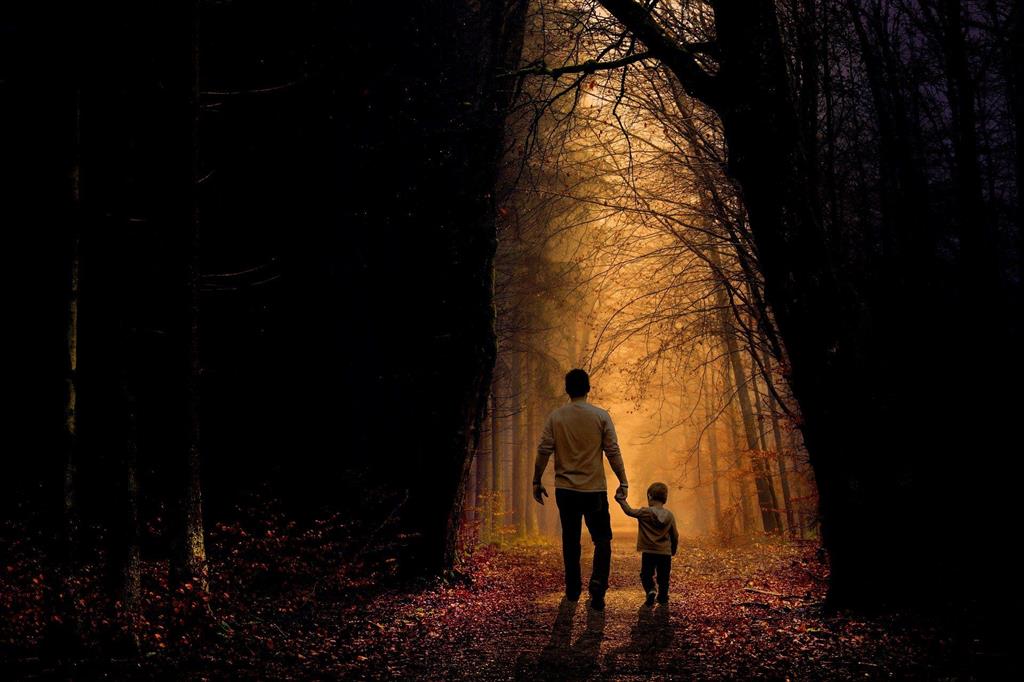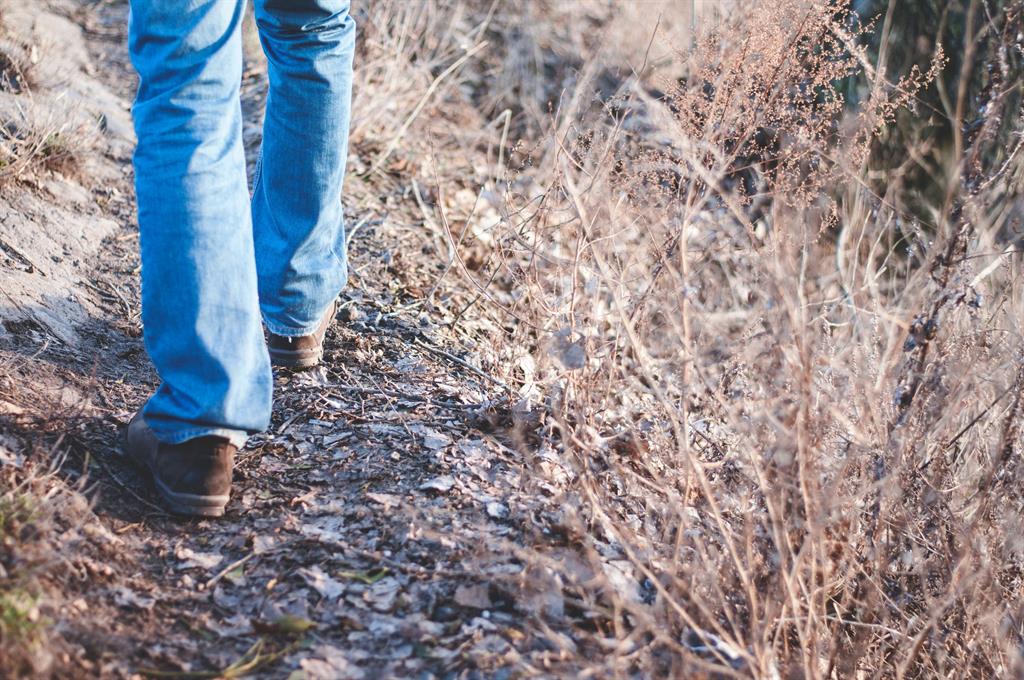A sequence of carefully designed exercises
Reduced tension is registered by the brain as reduced pain, allowing it to release new hormones for relaxation.
Henriette Lamprecht - It was the end of November 2016 and a sweltering Saturday night. Her aircon wasn’t working, she had no fan and all the windows were shut. In spite of the heat, she was shivering uncontrollably under the covers.
Just a few hours earlier Tabea Boye received a tip-off that a long-term employee who had his own set of keys to the family’s property, had teamed up with a professional criminal gang and intended to rob them. As it was a weekend she couldn’t change the locks or reset the remote. Her friends were out of town and her then-husband was travelling through Africa.
“All I could do, was go to bed and hope for the best. Locking the dogs with me in the room and praying to wake up early enough to call the police. For two nights, I was shaking under the covers in the extreme heat,” she recalls.
Thankfully nothing happened and she was able to solve the matter the following week. A few weeks later while holidaying in Germany, Tabea shared her story with one of her friends who is a medical doctor.
“When she heard my story, she said I can be grateful that I was shaking. According to her I was in a state of shock due to this extreme situation and my body was shaking off this incredible tension. She explained it’s a natural reaction and without it, the trauma would have been stuck in my body, causing all types of problems.”
Determined to put the trauma behind her and find constructive ways to deal with it, Tabea started her journey to become a Trauma Release Practitioner (TRE™).
“According to a study from Stanford University, 95% of diseases are caused by stress. Chronic stress and trauma accumulate in your body. Furthermore, it can alter your DNA. Stress is a killer and we need to take it seriously.”
She warns it is important to understand the difference between stress and trauma and how it’s stored in our bodies.
“Being alive means having to deal with stress in one way or the other. Stress always upsets our balance. Most people have experienced trauma in their lives which could be from a car accidents, sexual harassment or abuse to divorce and medical procedures.”
We all react differently to events and everyone perceives threats differently, says Tabea. What might be traumatic for one person might not affect another.
“Trauma, however, is always stressful, but stress is not necessarily traumatic. Stress is not always harmful, but trauma in most cases is.
It often overwhelms our entire sense of self and it is invisible. Unresolved emotional childhood trauma, for example, limits the ability to handle everyday situations since the coping resources are already overwhelmed in the effort to manage the hidden trauma.”
A traumatic event can lead to mental health issues such as post-traumatic stress disorder (PTSD), depression, anxiety, alcohol and drug use, as well as negatively impacting relationships with family and friends and at work.
“It’s important to note that phases of acute stress are normal, necessary as a matter of fact; otherwise your life would be boring.”
Chronic stress however doesn’t allow for balance since you are operating on an emergency system with limited body functions 24/7, being in a constant state of alert. Your body is overloaded with stress hormones all the time, while blood is diverted to your major muscle groups, preparing you to fight or flee. Digestion slows down, while your heartbeat, blood pressure and breathing rate increase.
“Your breath becomes shallower. Your muscles tense up to protect themselves from injury. It’s the ideal mix for survival but a not a recipe to thrive.”
In relation to trauma Tabea explains body, mind and soul are not single entities, but are connected.
She refers to the “muscle of the soul” also called the psoas muscle which is responsible for structural support and forming a shelf for the vital organs of the abdomen. It’s critical for balance, alignment, proper joint rotation and full range of motion and it is at the centre of your fight and flight response.
“The psoas muscle either curls you into a fetal ball or flexes you to enable the powerful back and leg muscles to fire.”
It is so deeply involved in these basic and involuntary physical and emotional reactions, that a chronically tightened psoas muscle is signalling your body that you are in danger.
Eventually, your adrenal glands will become exhausted and your immune system depleted.
Enter Trauma release exercises (TRE™) which helps to relax on a physical, emotional and mental level.
TRE™ was developed by Dr David Berceli, an international expert in the areas of trauma intervention and conflict resolution. It focuses on muscle relaxation and is a sequence of carefully designed exercises to tire certain muscle groups in order to evoke the body’s natural response to trauma: tremoring.
“The tremors happen in a controlled manner, enabling you to safely release deep, chronic muscular tension in the body, coming from its centre of gravity, which is protected by the psoas muscle, a deep-seated core muscle connecting the lumbar vertebrae to the femur.”
According to Tabea shaking activates this powerful centre, causing tremors throughout the entire body. Like a deep internal massage, the tremors travel along the spine and release deep chronic tension from the cranium to the sacrum. Reduced tension is registered by the brain as reduced pain, allowing it to release new hormones for relaxation, which will enable you to relax not only on a physical level but also on an emotional and mental level.
The exercises can only be facilitated by a certified trauma release practitioner, says Tabea.
“The exercises in itself and the tremoring are not rocket science, but clients need to be comfortable with the whole process; they need to know when and how to stop it.”
Sometimes emotions come up and this might be overwhelming, upsetting and confusing. According to her the practitioner is holding a safe space and is guiding the client through the process; gently intervening where necessary.
“The client doesn’t have to tell their story at all. They are free to do so, but it’s not necessary for effective treatment.”
TRE™ decreases stress and tension as well as the intensity of PTSD symptoms, but there are many more benefits, says Tabea.
“The major advantage of TRE™ is that once you have learned how to elicit and regulate this shaking response in your body, you can continue the practice on your own.”
Secondary benefits range from more energy and endurance, better sleep and greater emotional resiliency to lessened anxiety surrounding serious illness.
“TRE™ is a powerful tool that allows you to maintain your cutting edge advantage. Just as stress is not a once-off experience, it is recommendable that it become part and parcel of your daily routine to stay at the top of your game.” – [email protected]; Facebook: Tabea Boye – Growth Specialist
Just a few hours earlier Tabea Boye received a tip-off that a long-term employee who had his own set of keys to the family’s property, had teamed up with a professional criminal gang and intended to rob them. As it was a weekend she couldn’t change the locks or reset the remote. Her friends were out of town and her then-husband was travelling through Africa.
“All I could do, was go to bed and hope for the best. Locking the dogs with me in the room and praying to wake up early enough to call the police. For two nights, I was shaking under the covers in the extreme heat,” she recalls.
Thankfully nothing happened and she was able to solve the matter the following week. A few weeks later while holidaying in Germany, Tabea shared her story with one of her friends who is a medical doctor.
“When she heard my story, she said I can be grateful that I was shaking. According to her I was in a state of shock due to this extreme situation and my body was shaking off this incredible tension. She explained it’s a natural reaction and without it, the trauma would have been stuck in my body, causing all types of problems.”
Determined to put the trauma behind her and find constructive ways to deal with it, Tabea started her journey to become a Trauma Release Practitioner (TRE™).
“According to a study from Stanford University, 95% of diseases are caused by stress. Chronic stress and trauma accumulate in your body. Furthermore, it can alter your DNA. Stress is a killer and we need to take it seriously.”
She warns it is important to understand the difference between stress and trauma and how it’s stored in our bodies.
“Being alive means having to deal with stress in one way or the other. Stress always upsets our balance. Most people have experienced trauma in their lives which could be from a car accidents, sexual harassment or abuse to divorce and medical procedures.”
We all react differently to events and everyone perceives threats differently, says Tabea. What might be traumatic for one person might not affect another.
“Trauma, however, is always stressful, but stress is not necessarily traumatic. Stress is not always harmful, but trauma in most cases is.
It often overwhelms our entire sense of self and it is invisible. Unresolved emotional childhood trauma, for example, limits the ability to handle everyday situations since the coping resources are already overwhelmed in the effort to manage the hidden trauma.”
A traumatic event can lead to mental health issues such as post-traumatic stress disorder (PTSD), depression, anxiety, alcohol and drug use, as well as negatively impacting relationships with family and friends and at work.
“It’s important to note that phases of acute stress are normal, necessary as a matter of fact; otherwise your life would be boring.”
Chronic stress however doesn’t allow for balance since you are operating on an emergency system with limited body functions 24/7, being in a constant state of alert. Your body is overloaded with stress hormones all the time, while blood is diverted to your major muscle groups, preparing you to fight or flee. Digestion slows down, while your heartbeat, blood pressure and breathing rate increase.
“Your breath becomes shallower. Your muscles tense up to protect themselves from injury. It’s the ideal mix for survival but a not a recipe to thrive.”
In relation to trauma Tabea explains body, mind and soul are not single entities, but are connected.
She refers to the “muscle of the soul” also called the psoas muscle which is responsible for structural support and forming a shelf for the vital organs of the abdomen. It’s critical for balance, alignment, proper joint rotation and full range of motion and it is at the centre of your fight and flight response.
“The psoas muscle either curls you into a fetal ball or flexes you to enable the powerful back and leg muscles to fire.”
It is so deeply involved in these basic and involuntary physical and emotional reactions, that a chronically tightened psoas muscle is signalling your body that you are in danger.
Eventually, your adrenal glands will become exhausted and your immune system depleted.
Enter Trauma release exercises (TRE™) which helps to relax on a physical, emotional and mental level.
TRE™ was developed by Dr David Berceli, an international expert in the areas of trauma intervention and conflict resolution. It focuses on muscle relaxation and is a sequence of carefully designed exercises to tire certain muscle groups in order to evoke the body’s natural response to trauma: tremoring.
“The tremors happen in a controlled manner, enabling you to safely release deep, chronic muscular tension in the body, coming from its centre of gravity, which is protected by the psoas muscle, a deep-seated core muscle connecting the lumbar vertebrae to the femur.”
According to Tabea shaking activates this powerful centre, causing tremors throughout the entire body. Like a deep internal massage, the tremors travel along the spine and release deep chronic tension from the cranium to the sacrum. Reduced tension is registered by the brain as reduced pain, allowing it to release new hormones for relaxation, which will enable you to relax not only on a physical level but also on an emotional and mental level.
The exercises can only be facilitated by a certified trauma release practitioner, says Tabea.
“The exercises in itself and the tremoring are not rocket science, but clients need to be comfortable with the whole process; they need to know when and how to stop it.”
Sometimes emotions come up and this might be overwhelming, upsetting and confusing. According to her the practitioner is holding a safe space and is guiding the client through the process; gently intervening where necessary.
“The client doesn’t have to tell their story at all. They are free to do so, but it’s not necessary for effective treatment.”
TRE™ decreases stress and tension as well as the intensity of PTSD symptoms, but there are many more benefits, says Tabea.
“The major advantage of TRE™ is that once you have learned how to elicit and regulate this shaking response in your body, you can continue the practice on your own.”
Secondary benefits range from more energy and endurance, better sleep and greater emotional resiliency to lessened anxiety surrounding serious illness.
“TRE™ is a powerful tool that allows you to maintain your cutting edge advantage. Just as stress is not a once-off experience, it is recommendable that it become part and parcel of your daily routine to stay at the top of your game.” – [email protected]; Facebook: Tabea Boye – Growth Specialist









Comments
Namibian Sun
No comments have been left on this article